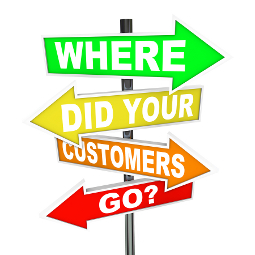
When we talk about social media metrics we often focus on proving success or proving a return on investment. It's important to show that we are helping the business reach its goals and produce wins, but it's also important for our own internal analysis and reporting that we understand where there is room for us to improve. This is why it's important to not only measure the positive metrics that prove a campaign's success, but also the metrics that demonstrate the fallout. What sort of damage are your campaigns doing to the community on your Facebook Page, and what can you do about it?
As we all know, Facebook is not a place people go to be advertised to. Instead, we go there to keep in touch with friends, to get our news, or to consume interesting and useful content from brands. That's not to say that we can't influence purchasing decisions on Facebook, but most brands have found they have more success through indirect influence, rather than constantly trying to push the hard sell. However, most have also found that by balancing valuable and interesting content with product focused campaigns that they can strike a balance between providing valuable content for their fans and meeting their own business objectives.
This is great news for brands, as they can keep their fans interested and still talk about their products and services so long as they don't over do it. This of course begs the question of how much is too much, and what is the correct balance? How do we understand the damage that a week, two weeks, or a month long sustained focus on content that most fans don't necessarily care about or that doesn't resonate as well as the content the brand would normally share day-to-day, will do to our Facebook communities?
When content is too sales focused for too long, fans start unliking your page, hiding the posts they don't like, and even choosing to hide all future posts from your page. While a few hundred or a few thousand (depending upon the size of your page) fans opting out of your posts or unliking your page may seem like a small price to pay to drive those campaign results, over time this lost reach will hurt your normal weekly metrics and your future campaign results.
Hey, wait! Where are you guys going? Can't you see this is a great offer?
So, how do you understand what effect your campaigns are having on churn?
- The first step is knowing which metrics you need to measure and when to measure them.
- The metrics you need are found by exporting your Facebook page level metrics to an Excel spreadsheet. In this spreadsheet, there are two tabs (or worksheets) that contain very similar information. One is called "Daily Negative Feedback Users" and the other is called "Daily Negative Feedback by..." The Daily Negative Feedback Users tab has the data you want, it is a measure of negative feedback by unique users.
- The other data set, which we will ignore, is a total count of negative feedback on your page, so data from the same user could appear multiple times if they were to take these actions multiple times. Thus, one or two very upset fans who were very active in submitting negative feedback could skew this data and you would not have an accurate picture of the number of unique fans your campaign affected negatively. The great thing about measures of unique users is that each fan's feedback is equally represented. No one who took any of these actions has a larger share of voice than any other fan.
- Now that we have the data we need, which of these metrics are important to us?
- Unlike most of the tabs you'll find in your spreadsheet, there are only a few metrics on this page, so we'll be using almost all of them. The metrics you want, in order of least to most important, are as follows: Hide Clicks, Hide All Clicks, and Unlike Page Clicks.
- So, what do these metrics mean?
- Hide Clicks refers to when a fan clicks the contextual menu in the upper right corner of one of your posts in their newsfeed, and chooses to hide that post. This is the least damaging type of negative feedback from your community. This fan will no longer see this particular post, but will continue to receive future posts from your page.
- Hide All Clicks are when fans click the contextual menu and hide a post from your page, and are then presented with 3 additional choices. They can either unhide your post, choose to hide all stories from your page, or unlike your page on the spot. In this case, this fan has chosen to hide all future stories from your page in their newsfeed. They are still a fan, but they will never see another post from your page in their newsfeed again.
- Unlike Page Clicks are related to the last option a user is presented with when they hide a post from your page. Right then and there, they have the option to unlike your page. This is arguably the worst possible outcome. This metric is interesting in that it does not count the total number of people who unliked your page during the dates that you pulled this metric for, but only those who unliked your page by clicking this option after hiding a post.
- What dates should I measure this data for?
- For some, the first instinct would be the measure the figures from the start to the end of the campaign. This is definitely something you need to do, but it doesn't provide context, we need to go deeper.
- The longer a campaign lasts, the more of an effect it is going to have on your fans, so for longer campaigns you'll also want to measure these metrics over a longer period of time to have a better understanding of how these campaigns affect the health of your Facebook community over time.
- If your campaign lasted a week, I would recommend measuring two weeks ahead, the week of, and two weeks following your campaign to get a full picture of how these metrics performed during your regular content preceding the campaign, how your campaign affected them, and what happened to the metrics following your campaign. For each additional week your campaign lasts, add a week of measurement before and after it.

Now that you have this information, what can you do with it?
First, analyze your data. Identify patterns such as a sudden increase in these metrics after a certain number of days into your campaign could signal that even if you're not finished with it, a growing majority of your fans are. You can also work out which types of product and sales related content resonates best and damages your fanbase the least. Once you've completed your analysis you can create hypotheses based on the patterns you've identified. You can then create targeted experiments to test these hypotheses.
- On average are your fans submitting more negative feedback after a certain number of days into a campaign? Try running a shorter campaign to reflect this and see if this decreases the negative feedback.
- Do posts about how product X can improve your fan's lives lead to less negative feedback than posts that encourage fans to go purchase directly? Do offers of free trials perform better than discount offers?
If you've identified the patterns, created your experiments, and managed to successfully replicate the results you noted in your initial analysis, you now have something very valuable! You have hard, actionable data about your fans. You can leverage this to:
- Improve the success and reduce the damage of future campaigns.
- Help you understand what types of campaigns resonate well with your fans.
- Know when you should push back against potential campaigns that could seriously damage your community in favor of short-term results.
- Identify what types of content can influence your fan's purchasing decisions without turning them off.
- You may even be able to share some of the data you've collected with other departments in the business that could be used to improve advertising efforts in other forms of media.
Can you come up with any other uses for this data that provides value to your social team or back to the business? Or other metrics that could be measured along with these metrics to give a better picture of churn caused by campaigns? If so, let me know in the comments below!
Tags:
AnalyticsDecember 10, 2012


